Frequently Asked Questions
Listed are some frequently asked questions about cannabis. Below that are helpful tips to make gardening as easy as possible.
1. Why should you grow your own cannabis?
2. What makes cannabis medicinal?
3. What's the difference between organic and synthetic cannabis?
4. THC vs. CBD: What's the better treatment option?
5. How do I know which strain is right for me?
6. What the difference between Indica and Sativa strains?
7. How do I determine dosage?
8. Is there any way to shorten the time to harvest?
9. How or why does a plant turn purple?
10. Is it better to start from seed or from clone?
11. What are the basic components of a healthy garden?
12. How do you photograph cannabis plants like a pro?
--
Why should you grow your own cannabis?
Worldwide, the cannabis plant is quickly becoming not only an accepted, but a preferred way to treat illnesses in a rising number of households and professions, able to help with everything from common sicknesses to life-threatening cancers.
With dispensaries opening across the country, the products available becoming increasingly diverse, and for many, access to cannabis being easier than it’s ever been, why should you grow your own?
Unlike other healthcare solutions, cannabis is unique because it can be grown on residential property, enabling patients to grow the varieties that best suit their needs, use preferred growing techniques, and enjoy increased quality control.
Going deeper than that, the goal of gardening at home is to develop a relationship with your garden. The best gardeners don't just take care of plants, they form a connection with them. The reason this kind of bond is able to be established is because each party is depending on the other to improve their life in one way or another. Energy is exchanged between the gardener and plant, and both begin to connect on a more personal level.
For the outdoor organic gardener, cannabis works amazingly well to treat all kinds of illnesses, including:
- Cancer
- Chronic Pain
- Post Traumatic Stress Disorder (PTSD)
- Epilepsy
- Anxiety
- Insomnia
In addition to helping relieve medical conditions, gardening can provide additional therapeutic advantages. Spending time outside in fresh air, in the warm sunshine, digging in soil, and watching things grow are just some of the factors that make it so beneficial, effective on both your physical and mental well-being.
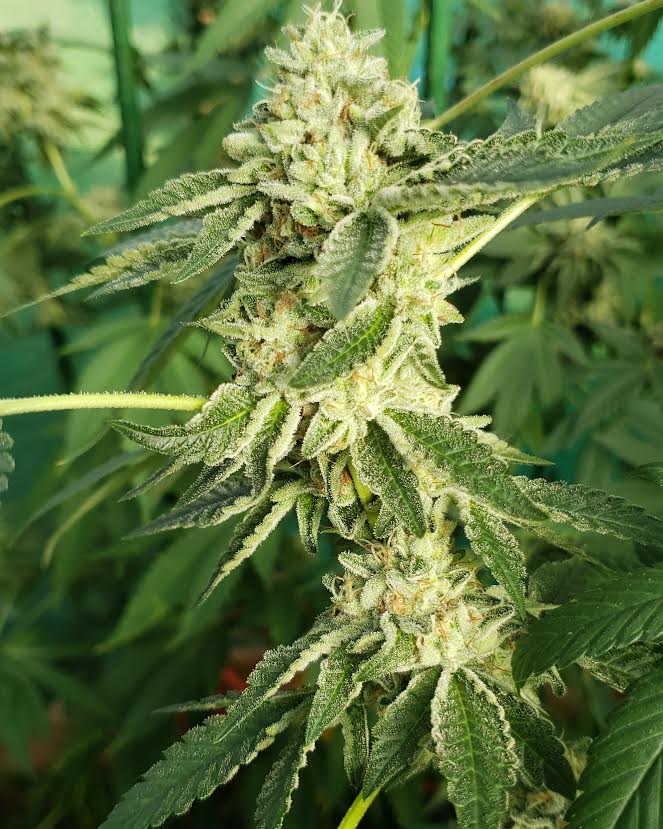 Cannabis can help relieve medical conditions and provides therapeutic advantages
Cannabis can help relieve medical conditions and provides therapeutic advantages
Some proven benefits of gardening include:
- Gardening boosts your mood
- Gardening lowers stress levels
- Gardening helps reduce anxiety
- Gardening helps you burn calories
- Gardening improves your immune system
- Gardening helps reduce the risk of heart disease and high blood pressure
- Gardening helps you establish or maintain a connection to nature
As for the stationary plant, it is able to express itself in a way nature can’t necessarily fulfill simply because of how sensitive a cannabis plant is. Human interaction, in this case, improves the life and health of the plant. Because of this, plants commonly reflect the level of effort given by their caretaker.
When you think about the life of a plant, the needs and dependencies of it, you begin to see things differently. Sustainability becomes a priority. The relationship you form with the plant will be strengthened by these realizations and attendant changes. It will encourage mindfulness, sacrifice, and care, which strongly influences a bond between two life forms.
--
As a result of this unique relationship, you can’t help but wonder just what kind of potential does this plant really have? New varieties, techniques, and technology are adopted every day, and that's what keeps things interesting. If you, the gardener, have such a significant influence on the plant, what kind of flowers will you be able to produce?
Especially if you grow the plant not solely consume it, you want to see what boundaries can be pushed, what capabilities can be reached, and what quality can be achieved, because in basic form, quality equals how well something works.
With so many positives, growing your own cannabis can ultimately help change your lifestyle and improve your health; two major reasons why having a garden at home is so beneficial.
What makes cannabis medicinal?
In order for anything to be considered medicinal, it has to be healthy to consume and provide adequate relief from an illness or malady. Certain components of the cannabis plant help categorize it as a healing herb.
They include:
- Cannabinoids
- Terpenes
- Organic vs. Non-Organic
--
It is the combination of these three components that will classify cannabis as being truly medicinal. In short, when you are able to find the correct strain, grown organically, that has the correct cannabinoids present as well as the preferred terpene profile, you will experience the full benefits of cannabis for your particular illness or issue. Medicinal value is not determined by how stoned a strain gets you, rather by the cannabinoids and terpenes in the strain, and how well the strain works for you.
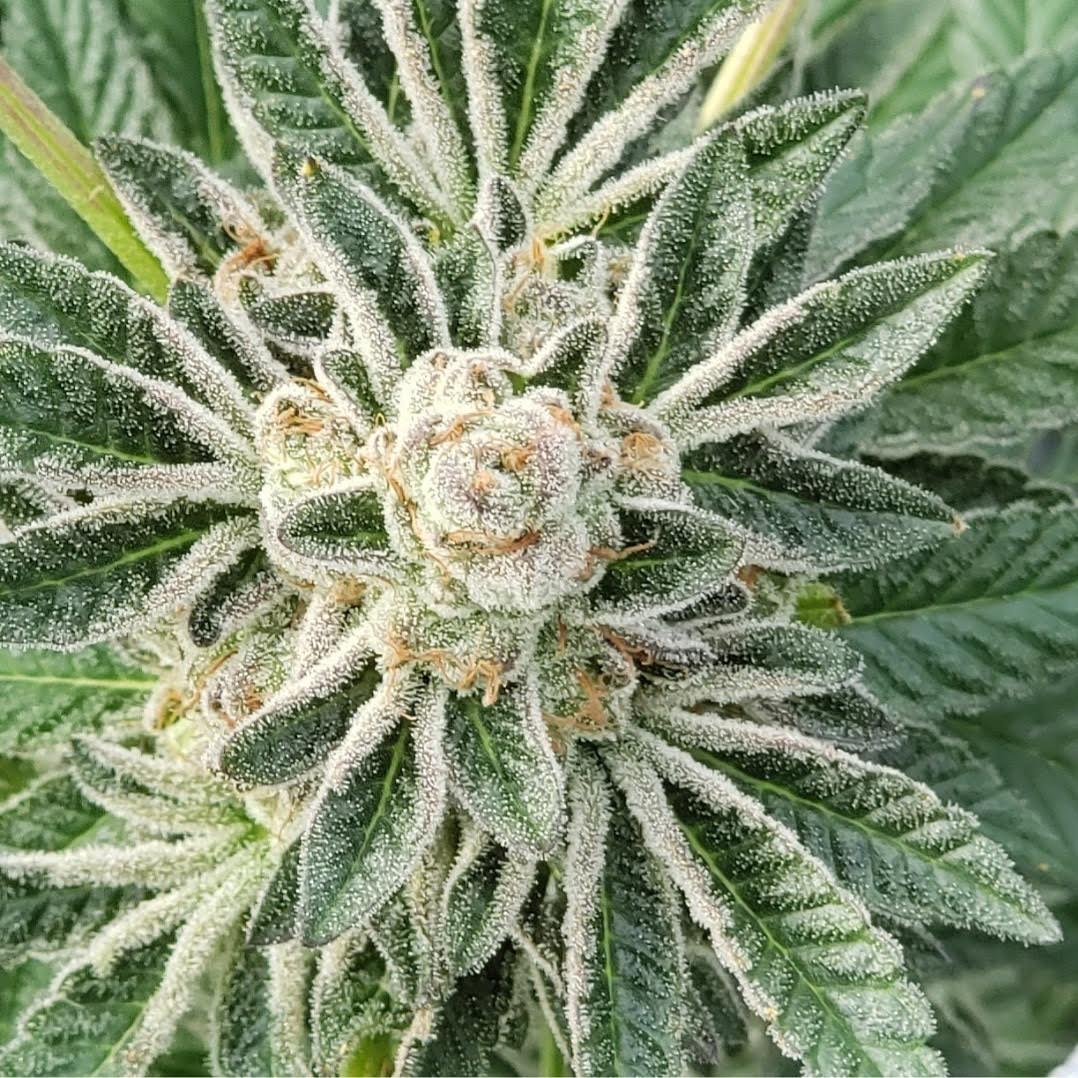 Organic cannabis with the proper cannabinoid content and terpene profile classifies it as medicinal
Organic cannabis with the proper cannabinoid content and terpene profile classifies it as medicinal
What's the difference between organic and synthetic cannabis?
This is a debatable subject depending on who you talk to, but an important consideration nonetheless.
To keep it short and sweet, organic cannabis differs from non-organic cannabis in one major way: how it is grown. True organic cannabis is grown in soil with beneficial microbes, under the sun, without synthetic nutrients, typically with natural pest management techniques. While you can find large-scale organic grows, it is uncommon, as it requires more time and attention in order to pull off a successful harvest. Most non-organic cannabis is grown indoors with bottled nutrients, sprayed with pesticides, and is often grown hydroponically, or without soil.
 Organic cannabis is grown in soil with beneficial microbes, under the sun, without synthetic nutrients
Organic cannabis is grown in soil with beneficial microbes, under the sun, without synthetic nutrients
Another difference with organic cannabis is that it has a higher nutrient density, which produces higher brix levels. The brix level is the percentage of sugars present in a plant's sap. The higher the brix level, the higher the quality of the flower. As far as cannabis is concerned, higher brix means plants are healthier, have more aroma, flavor, and medicinal value, and also extends the shelf life of a flower. Non-organic cannabis may be able to achieve high THC and CBD content; however, it will have lower terpene profiles when compared to properly grown organic cannabis. While THC and CBD content are important in determining the effectiveness of a strain, without the terpene profile to back it up, it is not as medicinal and the effects are short-lived.
--
If a cannabis plant, which is especially sensitive and responsive to the environment it grows in, is allowed to develop as naturally as possible, it is given a chance to reach peak medicinal value. Certain factors, like light intensity and microbial activity, will help a plant produce the terpenes and characteristics that allow it to reach that status.
If the cannabis you are consuming is grown with synthetic fertilizers, it can actually be harmful for you, because what is used on the plant will be passed on to the patient seeking relief. If it’s grown organically, with infused probiotics, it can be healing.
Because it can be difficult to be certain how flowers in a jar were produced, it's wise to consider the source it came from; ultimately, the patient will decide if a particular strain provides acceptable relief for them.
THC vs. CBD: What's the better treatment option?
Cannabinoids are chemical compounds naturally found in the cannabis plant. Once consumed, they bind to receptors in our endocannabinoid system to help regulate problems and keep our bodies working properly. While the plant contains over 100 different cannabinoids, the two most common are tetrahydrocannabinol (THC) and cannabidiol (CBD). Many people have heard of THC, but it wasn’t until recently that CBD was brought into the spotlight, thanks to all of the medicinal benefits it brings to the table.
An interesting fact is that both THC and CBD have the exact same molecular formula: 21 carbon atoms, 30 hydrogen atoms, and 2 oxygen atoms. It’s how the atoms are arranged that influences how each one affects the mind and body. And while they actually help treat several of the same symptoms, the biggest distinction between them is that THC is psychoactive, while CBD is not, and works more discreetly.
Typically, cannabis strains are either THC-dominant or CBD-dominant. If you want to use cannabis as a treatment option, it's good to know what each one is used for, how they interact with each other, and then decide how to proceed.
The best option really depends on what you’re trying to treat. It’s good to know that CBD can sometimes inhibit the full effects of THC and other medications, like high blood pressure prescriptions, so while it may seem that taking both simultaneously should be the way to go, it will heavily be determined by how your body reacts to each, what medications you are taking, and what your desired outcome is.
Because the effects of THC can be lowered by the presence of CBD, incorporating both components into your treatment plan can allow greater amounts of THC to be taken; beneficial if you need high doses of THC or if you are sensitive to its psychoactive properties.
 W.O.W. (Walking On Water) - A high THC strain
W.O.W. (Walking On Water) - A high THC strain
THC
THC is the psychoactive compound that works to relieve a multitude of symptoms experienced from a variety of medical conditions.
Patients find relief from THC for:
- Post traumatic stress disorder
- Insomnia
- Glaucoma
- Asthma
- Loss of appetite
- Muscular spasticity
- Psychiatric disorders
- Dependency and withdrawal
High THC cannabis strains include:
CBD
CBD is the non-psychoactive component that also helps to relieve a variety of symptoms. Largely known as an anti-inflammatory, CBD can be derived from the cannabis plant as well as the hemp plant.
Patients find relief from CBD for:
- Inflammation
- Seizures
- Preventing the spread of cancer
- Promoting bone growth
- Slowing bacterial growth
- Treating psoriasis
- Helping to regulate blood sugar levels
--
In addition to the above, medical patients use both THC and CBD for:
- Cancer
- Pain relief
- Depression
- Anxiety
- Nausea
As THC and CBD become more popular, methods of delivery and treatment are expanding. Options presently include edibles, flowers, oils, tinctures, topicals, and more.
How do I know which strain is right for me?
Cannabis is believed to be one of the best medicines on the planet, and that it can be used to treat many minor and severe illnesses. Just like over-the-counter medicines, everybody reacts to and prefers certain cannabis strains over others; they work differently from person to person, so you need to find the right strain in order for it to be most effective.
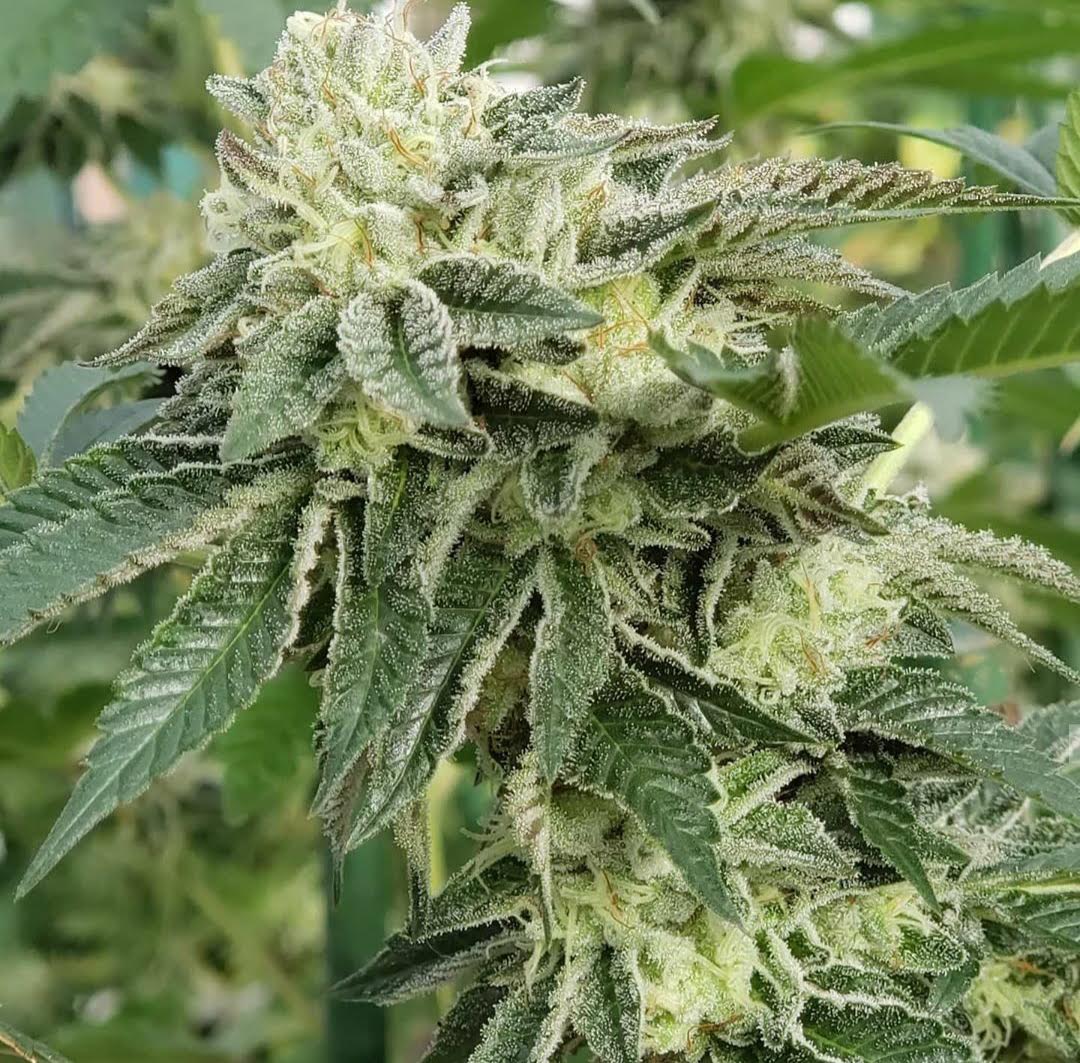 Find a strain that’s right for you to experience the best of cannabis
Find a strain that’s right for you to experience the best of cannabis
With so many strains to choose from, where do you start?
When selecting a strain for treatment, keep the following questions in mind:
- What do I want to treat? THC vs CBD?
- Do I want it to make me relaxed or productive? (Day or night use?)
- How many hours of relief am I looking for? (What strength?)
When selecting a strain for your garden, ask yourself:
- How much experience do I have growing?
- What characteristics am I looking for?
- Is this for indoor or outdoor?
When deciding if a strain is effective, pay attention to the following:
- Do I feel relief from my illness/issue?
- Do I feel comfortable?
- Do I need a stronger dose? A lower dose?
In addition to finding the right strain, the correct ratio of THC to CBD, and the correct dosage, you may have to also find the right way to consume it. This commonly depends on your age, sensitivity, preference, and factors such as your daily routine. Popular methods of delivery include:
- Flowers/Smoking
- Oils
- Edibles
- Tinctures
- Topicals
--
We encourage you to try new strains, ask questions, and go for something that provides adequate relief. Bag appeal, frostiness, and clever names are all nice, but medicinally speaking, have little to do with the effectiveness of a flower.
The more you familiarize yourself with cannabis, the better you'll be able to differentiate the effects and characteristics of each strain. Finding the right one can take some time, but when you find that winner, it can be life-changing.
Happy hunting!
What's the difference between Indica and Sativa strains?
The cannabis plant was originally categorized into three main types:
- Indica-dominant
- Sativa-dominant
- Ruderalis (Auto-flowering)
Additional categories include:
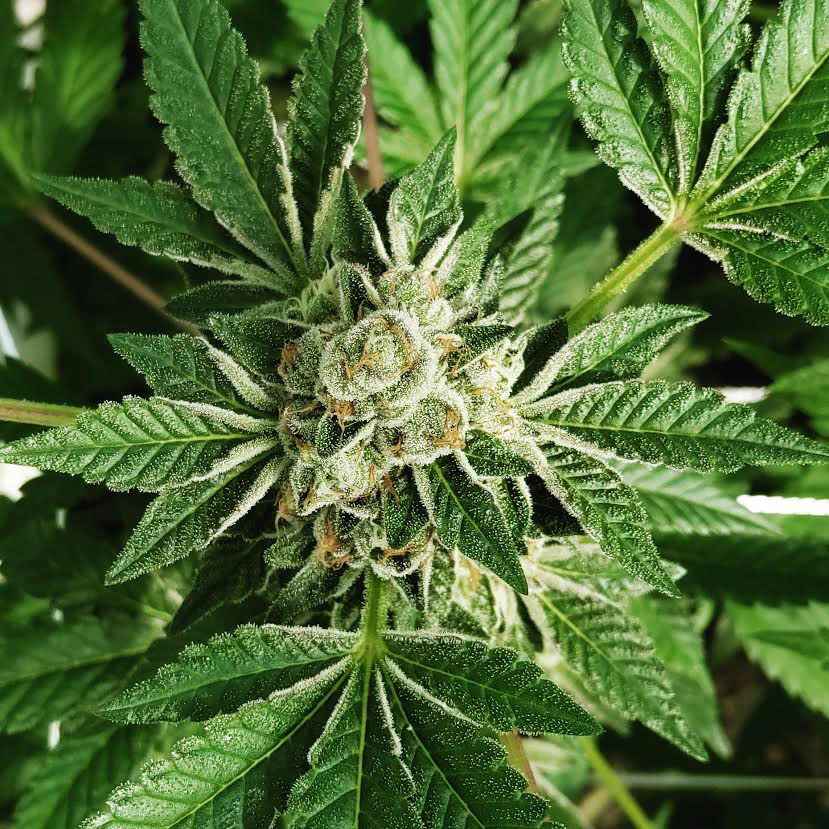 Animal Cookies - an Indica-dominant strain
Animal Cookies - an Indica-dominant strain
For those unfamiliar with the plant, they all tend to seem pretty similar, but once you familiarize yourself with them, differences are easy to recognize:
Indica-dominant strains typically tend to be short and bushy, have less leaves than Sativa strains, and the leaves are a darker green and wider. Indica flowers produce more of a relaxing effect, and are generally preferred for nighttime use.
Sativa-dominant strains typically tend to be tall and thin, have more leaves than Indica strains, and the leaves are lighter green and smaller. Sativa flowers produce more of an uplifting and energizing effect, and are generally preferred for daytime use.
--
Ruderalis strains typically tend to be shorter and stalkier than either Indica or Sativa strains. Characteristics also include wide leaves with a light green color, and low THC content. Its flowering cycle is initiated by maturity instead of light exposure, making it auto-flowering.
Hybrid strains are a mix of two varieties; for example, a cross of an Indica and a Sativa. As the cannabis plant’s gene pool becomes more diverse in the modern era of breeding, there is an increasing variety of
poly-hybrid strains; a cross between two (or more) hybrids. Most of today's popular strains are poly-hybrids.
How do I determine dosage?
Similar to prescription medications, the components of cannabis affect each person differently. What works for one person may not work for the next. When it comes to finding which one is right for you, it’s more about finding what ratio of THC to CBD is right for you. Some people react better to 100% THC or 100% CBD, while others may react better to more of a 1:1 or maybe a 2:1 ratio. Age, sensitivity, and therapeutic need will play a leading role in what the best percentages will be for you.
 Age, sensitivity, and therapeutic need will play a leading role in what the best dosage will be
--
Age, sensitivity, and therapeutic need will play a leading role in what the best dosage will be
--
In addition to determining the correct ratio of THC to CBD, finding the correct dosage is also important. For example, if you decide that a 100% THC strain is what helps, you will need to then find the right dose. It is usually wise to start off with a small, introductory amount, a loading dose if you will, and then gradually increase it. You'll want to allow your body to develop somewhat of a tolerance before you can begin taking a large enough dose for effective results. If you start with too big a dose, you may have a negative experience, like increased heart rate or anxiety, and it could discourage you from continuing treatment.
When you’re deciding which route to go, THC or CBD, remember, you may need a combination of both. It may take a little time before you can find the correct ratio and then begin treatment for a specific illness/issue, but the advantages it offers can be substantial. Do your research, seek advice from reputable sources, observe how each one works for you by finding the proper strain and dosage, and finally, commit to treatment sufficiently long enough to experience the full benefits.
Is there any way to shorten the time to harvest?
After you’ve grown cannabis for a while, it’s easy to become anxious for harvest and to start the next cycle of plants. You may find yourself wondering if there is anything you can do to shorten the time you have to wait.
Good news: There is!
Most of them involve a little planning ahead, but all of them work without having to compromise on quality.
Here’s what you can do:
1. Choose a Strain That Finishes Quickly
When it comes to a short growth cycle, strain variety makes all the difference. Choose a strain that has a short finishing time. Indica-dominant varieties typically perform the best in that department; for example, strains like Bubba Kush.
It’s good to know that ‘short‘ in the world of a cannabis plant means about 8 weeks from the time it gets put into flower. With the right strain, you could be looking at a crop that takes around 12 weeks or so total from start to finish.
Pretty good, right?
2. Start From a Cutting
Another popular way to speed up the amount of time it takes to grow a cannabis plant is to start from a cutting instead of from a seed. This will shave about 2 weeks off of your wait time. This is due to the fact that the plant is already rooted and growing. As long as it’s a healthy clone from a reputable source, it’s worth it.
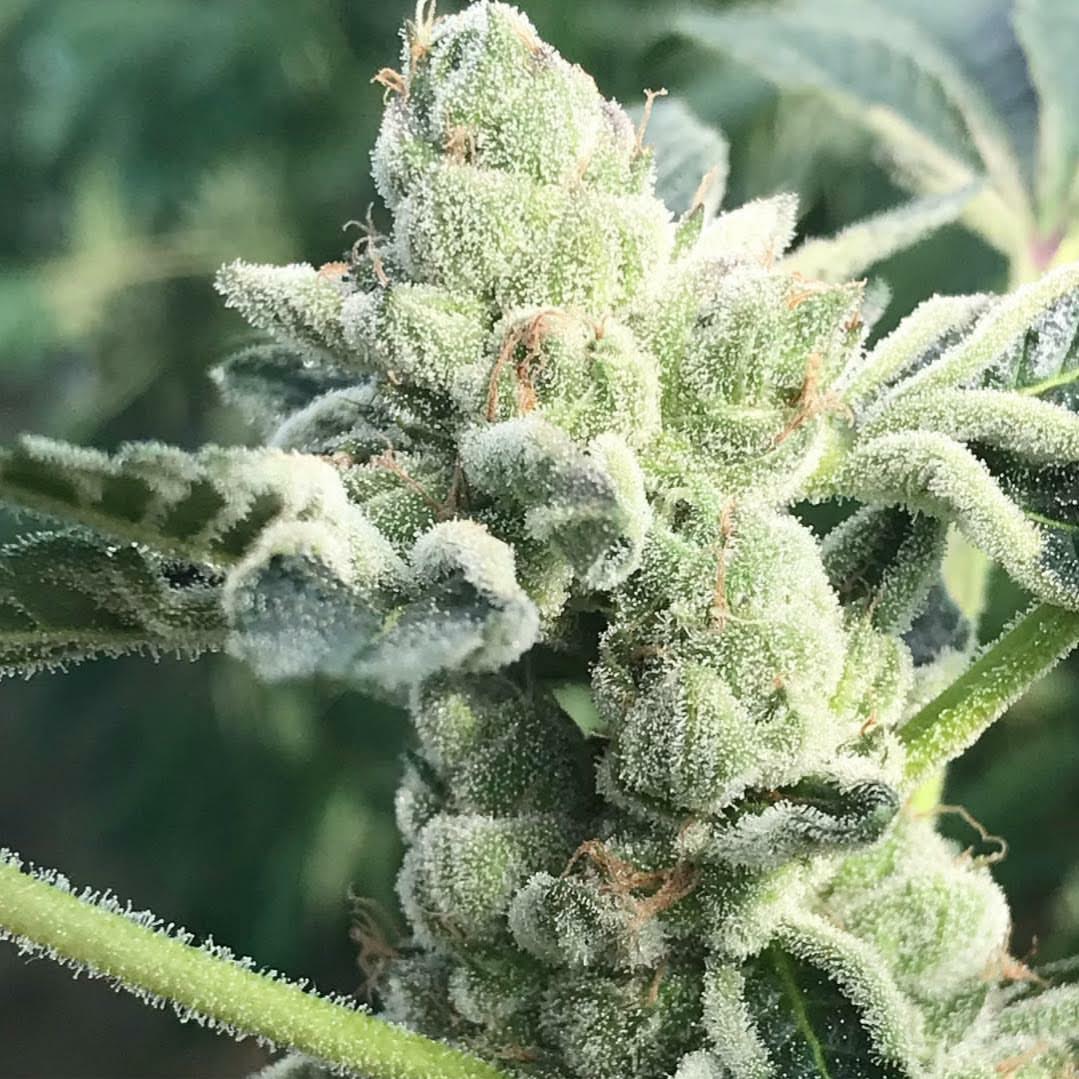 Good news: There are a few ways to shorten the time till harvest
3. Keep the Plant Size Small/Short Veg Time
Good news: There are a few ways to shorten the time till harvest
3. Keep the Plant Size Small/Short Veg Time
If all things are healthy (and again, strain dependent), a smaller plant usually means it’s spent a shorter time in veg. Keeping a cutting under veg lights for 3-4 weeks will allow you to get the plant to a nice size, increasing your yield, while still facilitating a shorter time to harvest.
Bonus: a shorter veg time also decreases the chances of deficiencies - because you won’t need to look after it as long.
Decide how long you’re willing to let your plants veg.
--
4. Keep It Healthy
For fast, steady growth, a cannabis plant needs to be healthy. It’s essential. Healthy plants, not surprisingly, also produce higher quality flowers. Flourishing cannabis plants are green, with leaf stems growing upward, and with the fingers of the leaves maintaining proper structure and large size.
In order to reach that state, plants need to have good soil, vigorous roots, adequate light and airflow, be kept at the right temperature and humidity, and be well-fed, trained, and maintained. Remember, a shorter time to harvest doesn’t necessarily mean less work; it just means less wait time.
Although slightly demanding, it’s nothing you can’t handle.
--
How or why does a plant turn purple?
Cannabis is typically thought of as a green plant, but there are certain varieties that also show colors like red and purple. You may be wondering, what makes a cannabis plant produce colors like that? There are a few different reasons why plants either exist in these color ranges or have the ability to change color.
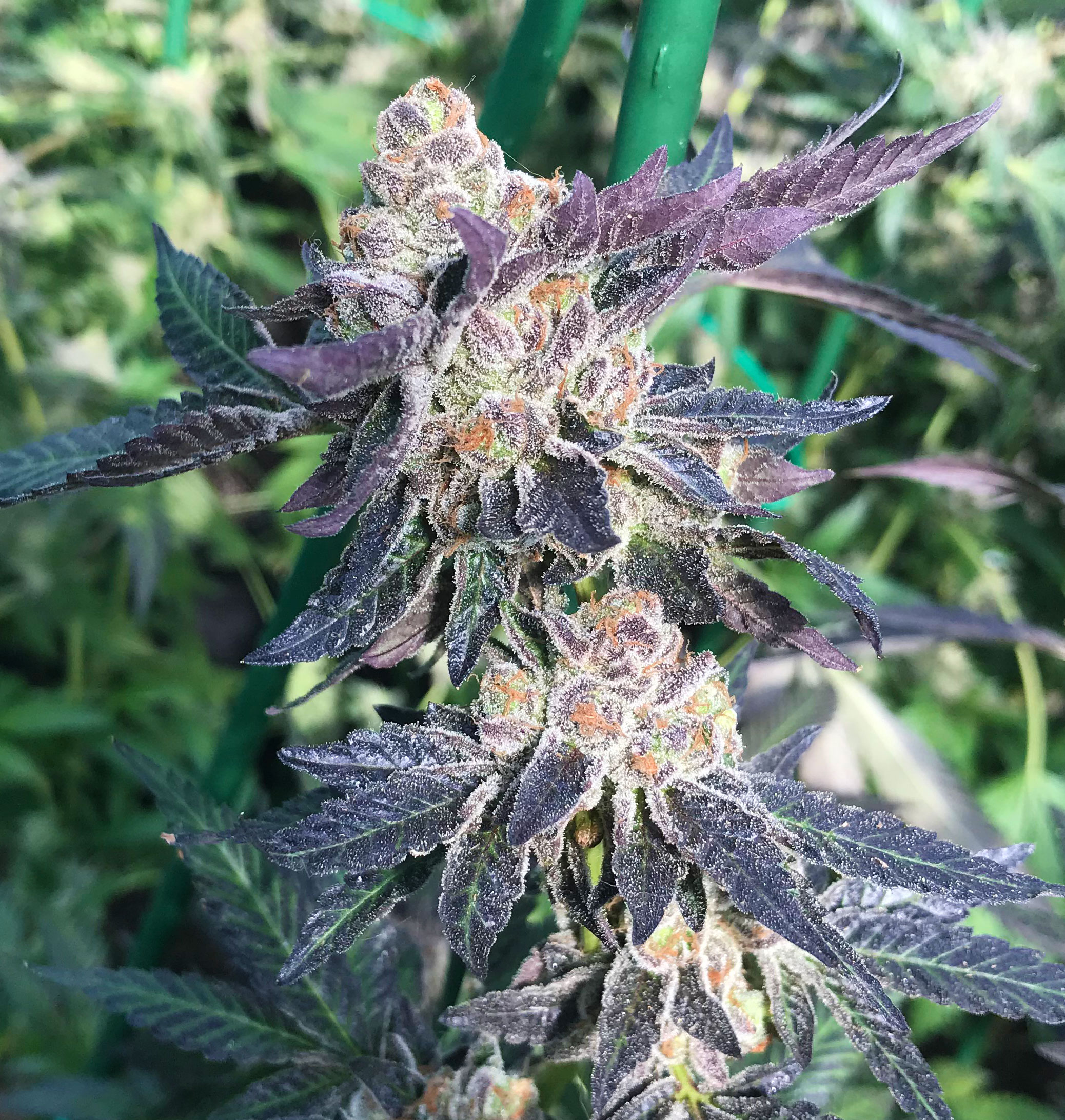 Certain varieties of cannabis show colors like purple, red, blue, and black depending on certain factors
Certain varieties of cannabis show colors like purple, red, blue, and black depending on certain factors
Genetics: The #1 Factor Of Color In Cannabis
Light is composed of wavelengths, with each wavelength appearing as a different color. Light is absorbed by pigments naturally occurring in objects, but depending on the object being exposed to the light, not all wavelengths are absorbed. Instead, certain wavelengths are reflected away from the object. The wavelength or color that is reflected away is the color the object appears to our eyes.
The pigment that makes cannabis green - along with most plants - is chlorophyll. The substance that makes cannabis purple is called anthocyanin, which is a group of around 400 pigments that are water soluble and categorized as flavonoids.
The genetic makeup of a plant will determine what pigments (or color) it will have. Genetics are the #1 factor that influences the purple color of a plant based on how many anthocyanins are present.
Environment: The Other Factor
Many scientists believe certain plants developed genetic coding for pigmentation based on environmental factors - to attract pollinators, or as a defense mechanism, to protect themselves from harmful sun rays and pests. Most cannabis plants, if not all, will remain green throughout the vegetative stage and will only begin to show color once they begin flowering, which is when a plant is most likely going to be targeted by pests and pathogens. The most noticeable color changes typically show up in the last 7-14 days of flower.
And while many plants only exhibit color on their flowers, cannabis plants can also show color on their leaves, stems, branches, and trichomes. This is because anthocyanins are present throughout the plant.
 Environmental factors greatly affect the look of a cannabis plant
Environmental factors greatly affect the look of a cannabis plant
In addition, anthocyanins do not always appear purple, and depending on the environment, can appear as pinks, reds, blues, and black. Pinks and reds appear in acidic mediums, purples appear in neutral mediums, and blues are present in more alkaline environments. While pH and nutrient imbalances can influence plant color, healthy cannabis plants change color for other reasons as well.
Another environmental factor that influences color in certain cannabis varieties is temperature. Similar to the color-changing leaves in Fall, cooler temperatures (60+/- degrees F) cause a cannabis plant’s chlorophyll to break down into sugars that are used by the plant. With the dominating chlorophyll pigments broken down, anthocyanins become visible.
 Colored cannabis is usually due to genetic traits, but temperature can also play a role
Colored cannabis is usually due to genetic traits, but temperature can also play a role
Is it better to start from a seed or clone?
It’s personal preference whether or not you should start from a seed or a clone. If you're a beginner, it may take some time and practice to learn how to take a seed or clone from start to finish; they each have their own challenges when it comes to success. As far as the final flower is concerned, you can’t tell if it came from a seed or a clone. Both methods are capable of producing top shelf flowers. When deciding which route you should take, consider your skill set, environment, end goal, and circumstantially advantageous method.
Starting From Seed
Pros
- Easier to acquire
- Ability to start as needed
- Don't require an indoor room
- Develop a tap root
- Increased vigor
- Unique phenotypes
- Bigger yields
Cons
- Takes 4-6 weeks longer to veg or harvest
- Variations with flowers
- May have males
Starting From Clone
A clone is a cutting taken from a Mother plant. Once cut, it will need to be closely watched, especially until it develops roots. For first-time gardeners, it is usually easier to start from a seed unless you’re working with an already rooted clone.
Pros
- Guaranteed female plant
- Faster time to veg or harvest
- Consistent flowers
--
Cons
- Harder to acquire
- Require an indoor room
- Lack a tap root
- Decreased vigor
- Possibly a strain that many people have
- Increased likelihood of developing or containing diseases or pests
- Lower yields
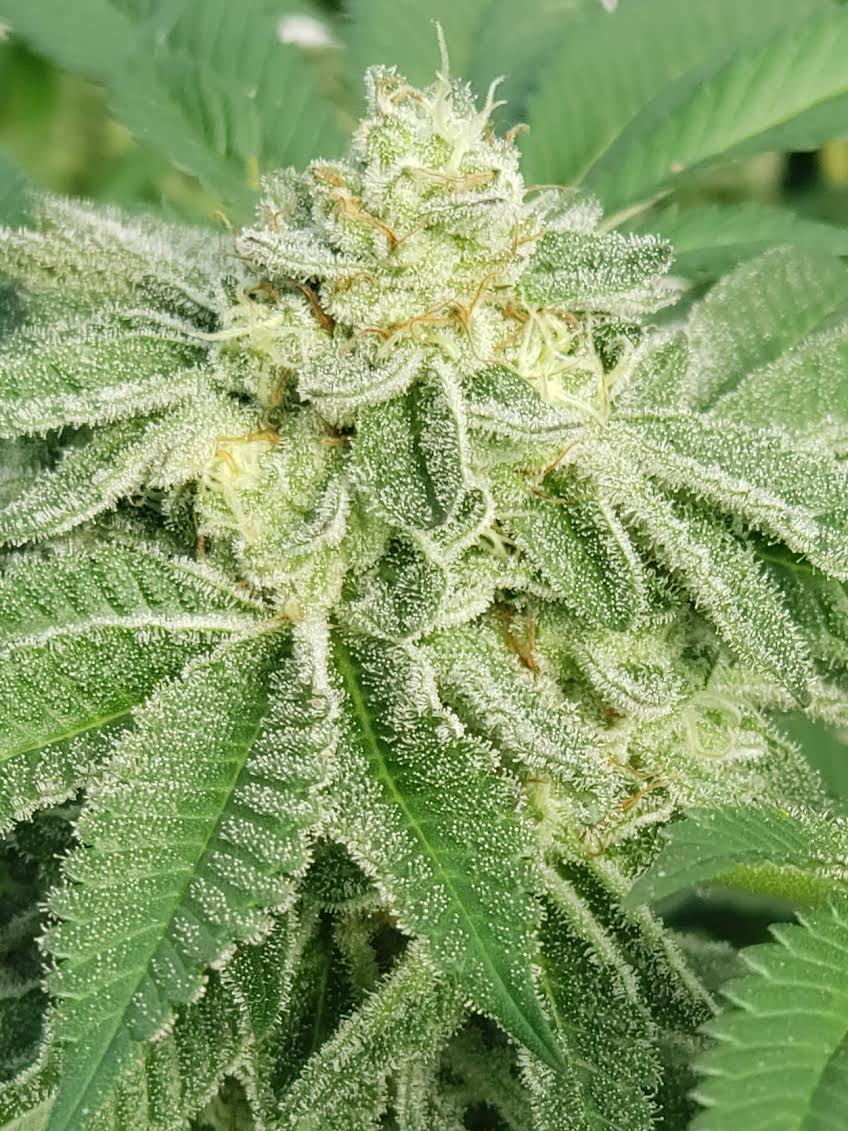 Blue Sapphire was found from seed and tests at 32.5% THC
Blue Sapphire was found from seed and tests at 32.5% THC
What are the basic components of a healthy garden?
This is a common question. By putting enough time into your garden, you can achieve excellent plant health, which largely determines the quality.
To ensure your garden remains in peak health, make sure you provide the following:
--
- Living soil
- Healthy roots
- Beneficial bacteria
- Beneficial fungi
- Proper light exposure
- Balanced pH
- Balanced liquid applications
- Balanced diet
- Timely transplanting
- Proper training
- Maintain an ideal VPD
- Proper air circulation and ventilation
- Daily inspections
- Lots of love
How do you photograph cannabis like a pro?
Whether you want to improve your photographic skills, post online, or simply have quality images to decorate your home or office with, here are some tips on how to expertly photograph cannabis plants:
1.
Use a quality camera. Not all cameras are created equal. Phone cameras work, but professional cameras really perform.
 Photographing cannabis takes practice, but shows just how beautiful the plant is!
Photographing cannabis takes practice, but shows just how beautiful the plant is!
2.
Consider how far into flower the plant is. The most remarkable cannabis photos are of healthy plants that are several weeks into flower. Make sure you inspect your garden daily and prepare your plants for a photoshoot by keeping them pest and disease-free for the entirety of their lives. A happy plant is a well-cared for plant.
3.
You need good lighting. Take photos at different times of the day. Morning and early evening provide optimum natural lighting, ensuring the light isn't too harsh. Overcast days can also add to the look of a photo, so experiment; photograph in different weather conditions as well.
4.
Try different angles. Each plant is different, so take photos of its unique beauty by varying your photographic perspectives. Be aware of what's in the background, and try to capture the flower with nothing man-made in the frame.
--
5.
Stand still. Blurry pictures won't do! Consider using a tripod. Wind can cause movement with the plants and can blur photos as well, so be conscious of the weather and try to avoid photographing on windy days; consider turning fans off too. Zooming in can help you dramatically determine if the resin glands and hairs are in focus. If you do take a blurry photo, it's best to delete it immediately to avoid having too many images to look through, or running out of memory.
6.
Edit. It's important not to overdo the editing, but touching up a photo can be helpful. The best thing you can do is crop a photo. Zoom in and find the best look. Sometimes placing the flower off center achieves the best, most impacting results.
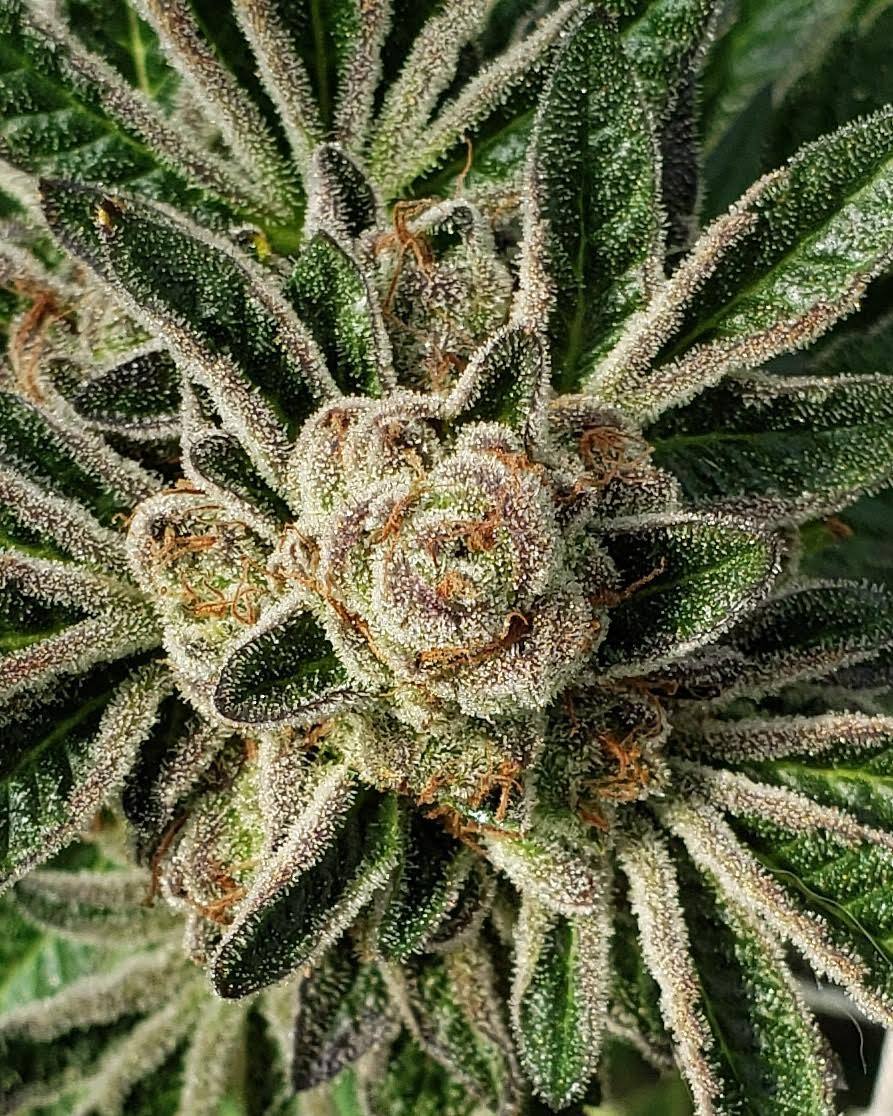 Tip: Zoom in and crop an image to capture some great shots
Tip: Zoom in and crop an image to capture some great shots
Helpful Tips To Make Gardening As Easy As Possible
Listed below are some helpful tips taken from our book that will help make gardening a little easier. They are placed here for easy reference.
Tools To Have On-Hand
- 5-gallon bucket(s) or container of choice
- Clean, sharp scissors
- Razor blade
- Fiberglass stakes, zip ties, clips, and support wire
- Gloves
- Magnifying glass
- Moisture meter
- Notebook
- pH & PPM, EC meters
- Plant tags
- Spray bottle
- Sprayer
- Atomizer
- Step stool
- Sticky traps
- Rooting cubes
- Clone domes
- Paper towels
- Watering can(s)
Products We Love & Recommend
- Hendrikus Organics
- Down To Earth
- Green Grow Nature’s Pride
- Urb Natural
- Organics Alive
- Xtreme Gardening Mykos and Azos
- Clonex
- Root Riot cubes
- Pro Mix
- Silica Earth
- Blumat Watering Systems
- Amazing Doctor Zymes, Grow Safe, Green Cleaner, Spinosad
Security
Choose a place on your property that is somewhat hidden, at least not in a highly-trafficked area. You may also want to consider investing in a good security system; fenced-in yards, surveillance cameras, and a good guard dog work nicely for a backyard garden.
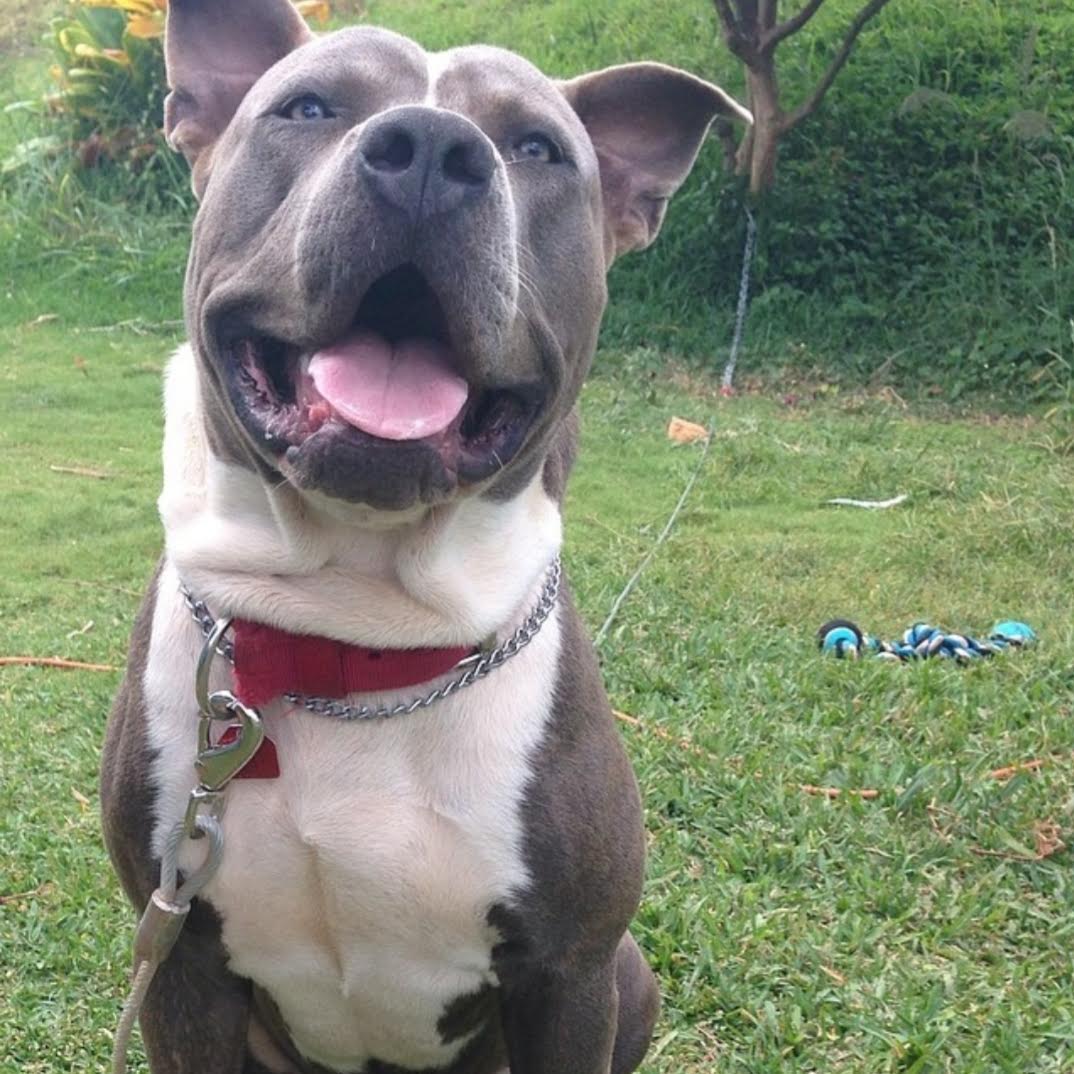 Guard dog on duty - he does his job well
Guard dog on duty - he does his job well
Genetics
Consider the source. When you start with a regular seed, you never know if it’s going to become a female or male plant. You’ll have to wait until it matures to see what it develops into. Regardless, sprouting seeds is a fairly simple process and can be a great way to start a garden. Make sure you plant seeds that come from a reputable grower or seed company, increasing the probability that they will be quality.
Clone good genetics before flowering them. After you pop seeds, to ultimately decide whether or not to keep a particular pheno in your garden, you will need to flower, harvest, and cure it. (You need to try it and see how you like it.) This means you will need to clone that plant before you put it into flower.
Light
When deciding where an outdoor garden should be, first track the sun. This allows you to determine the path it takes over your land/property/greenhouse. Take note of tall trees or structures that might shade an outdoor garden at some point in the day and choose the location that gets the most direct sun.
Don’t stress a plant too much. For indoor plants that are being exposed to new light fixtures, start with the power turned down and gradually increase until you find the right setting. Avoid pruning or lollipopping for a couple of days after transitioning a plant to new lighting; wait until the leaves are standing up and maintaining proper structure.
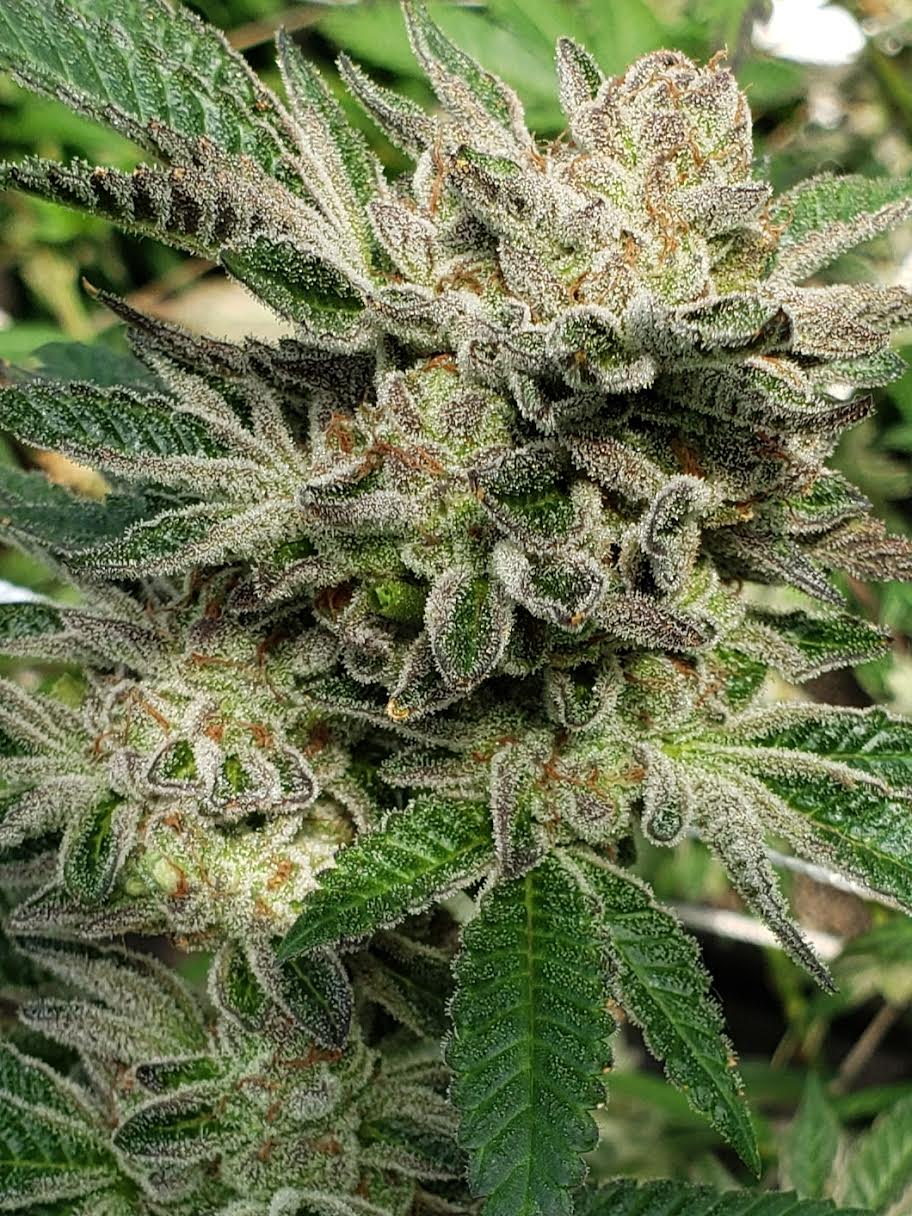 The photoperiod a plant is exposed to heavily determines quality achieved
Make sure plants get enough light
The photoperiod a plant is exposed to heavily determines quality achieved
Make sure plants get enough light. The correct distance a light should be above a plant is largely dependent on the fixture and the settings of the light in addition to the strain.
Wear protective glasses when tending to indoor plants. For most lights, gardeners and pets should not have lengthy exposure, or problems with eyesight may develop. If you need to work in the light, wearing special glasses is recommended.
Germinating Seeds
Be aware of how old a seed is. If the seed is older, to increase the chances of it germinating, pre-soak or crack it with needle nose pliers.
Add favorable ingredients to help a seed germinate more quickly. To speed up germination time, blend up a small amount (5%) of aloe vera with coconut water and mix in the water. You can also add a small amount of Urb Natural.
When it comes to germinating a seed, a slight difference in temperature can produce dramatic differences in results. If temperatures are too cold, it will take the seed a long time to germinate, or it may not germinate at all. Heating pads work well to stabilize temperature and encourage sprouting. If it's too hot; above 77F; it will increase the probability that the plant will be a male.
It is important to mist a seedling with water instead of pouring water on it. This ensures the seedling doesn't get washed away, or that the roots aren't disturbed while trying to take hold of the soil.
Cloning
Take more cuttings than you need. It can be challenging when you first start cloning to get a cutting to survive and root. It’s always a good idea to take a few more cuttings than you plan on keeping alive, just in case some of them don’t make it. If all of them make it, you can always toss the slow growers or weaker cuttings.
During every stage of the cannabis plant’s development, you should be careful not to overwater it. Using a spray bottle filled with water works great with cuttings because you can really control the amount of water that comes in contact with them. The finer mist you can apply, the better. This will be determined by the type of spray bottle you have. Facial misters from a local salon store work great.
Cloning can be challenging, but keep trying. Some varieties are harder to root than others, and there are many different ways to achieve favorable results. After enough practice, you’ll get a technique down that works best for you and your plants, and eventually be able to have a high success rate at the cloning process. The healthier the cutting, the healthier the plant will be.
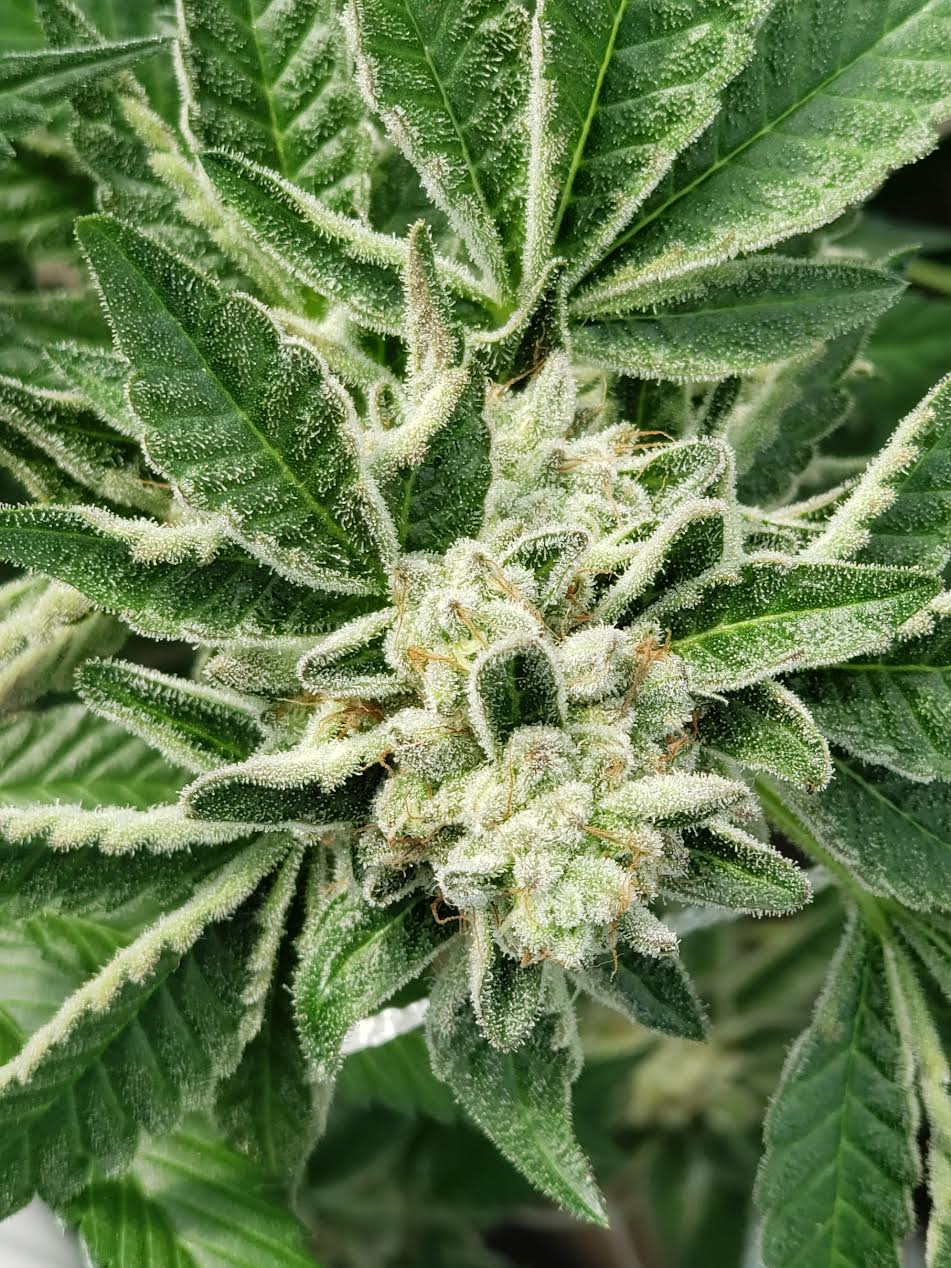 Cloning allows you to grow the same pheno over and over
Cloning allows you to grow the same pheno over and over
Soil
If you choose to use pre-mixed soil, you should not use the same ingredients or amounts as those listed in this book. This is because pre-mixed soil already has many of the ingredients listed. Fox Farm Ocean Forest and Rootz Organic Formula 707 are two good pre-mixes that are easy to find in stores.
Temperature
Check your plants more often on hotter days. If there are few clouds in the sky and the temperature is high, make sure to pay attention to your plants; the soil can dry out faster than usual.
Intense sunlight requires additional protection for plants. If you live in a somewhat unforgiving environment - in drier climates where the sunlight is too intense - you may have to put shade cloth over your plants to help cool the garden or plant a cover crop to prevent rapid moisture loss.
Certain varieties perform better in different conditions. Too much heat will cause stress and lower overall quality in the soil and plant. A plant’s susceptibility to cold weather is dependent on factors such as the location, soil, duration of exposure, and other variables. Selecting a variety that performs well in your particular location will make it easier to achieve consistent successful harvests.
Feeding
Anytime nutrients combine with water, the mixture should be used right away. Because a tea is alive, the pH can dramatically shift up or down if it’s not used within an hour. As long as you have enough sugars or a food source for the microorganisms to eat, the pH should stay fairly consistent. It’s when the food supply runs low that you risk the pH changing from aerobic to anaerobic. An easy way to tell if a tea has gone bad is by the way it smells. If it smells bad, it cannot be used and needs to be thrown out.
Make sure if you’re moving a plant, you wait to feed or water it until after you’ve moved it. This way, the plant will be lighter and easier to carry.
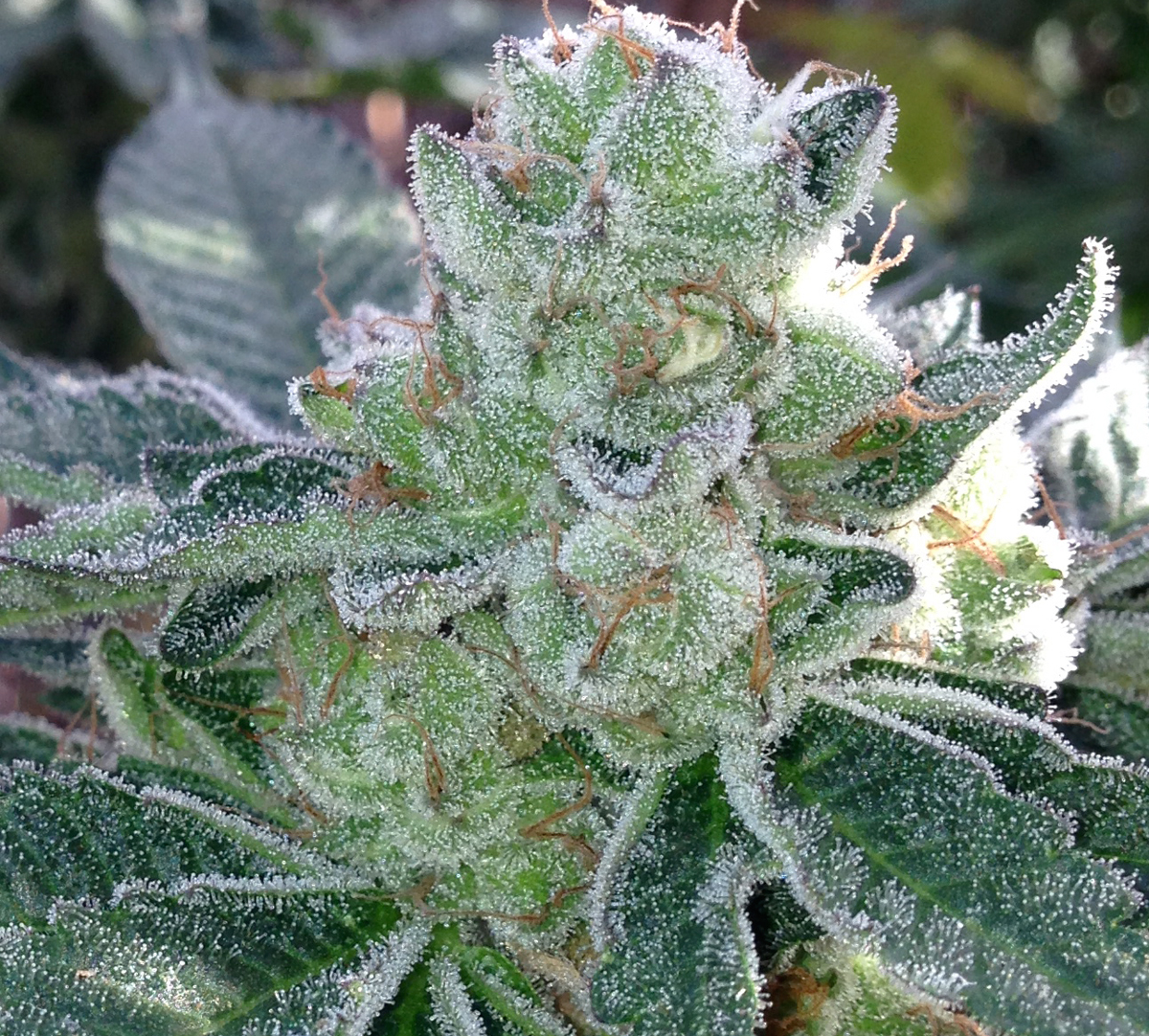 Certain varieties perform better in different conditions
Certain varieties perform better in different conditions
Pests
There are several ways to protect cannabis plants from being overtaken by bugs, with the most effective technique being prevention. Some additional tips include:
- keep everything as clean as you can
- pretreat pots and tools
- know where you're sourcing your ingredients from
- regularly use organic sprays for common pests
- incorporate beneficial predators
- consider companion planting
- perform thorough daily inspections
Organocide is not something you want on flowering plants. Organocide can be used to treat pest infestations; however, it should only be used during veg as it is a fish emulsion spray and will leave a fish-like smell. Veg plants respond well to it, but flowering plants will hold the smell, lowering the quality achieved.
Do not use sulfur and oils of any type within 7 days of each other. It can cause a plant’s health to suffer or possibly die.
Diseases
Focus on maintaining an ideal VPD to eliminate the likelihood of acquiring disease. When it rains off and on for several days, it creates ideal conditions for diseases like powdery mildew (PM). Consistently erratic wet-dry-wet-dry conditions allow humidity levels to swing and create pockets of dead air that easily allow spores to settle and overtake an area.
Beneficial Predators
Select native species. Before you introduce predators into your garden, make sure the selected species is already native to your area to prevent contributing to an unbalanced ecosystem.
Be careful when ordering predators online. Many predatory mites and other predators can be ordered online or at local gardening stores. If you order them online, be sure not to leave them in the mailbox for too long, especially in hot weather, or they will quickly die.
Chill predators like lady beetles in the fridge for 2 hours to discourage them from flying away as soon as they are released. Ongoing refrigeration may also be required for certain species; most of them have a short shelf-life anyway when it comes to keeping them alive.
Release enough predators for the amount of pests to ensure elimination. The more predators that are released, the faster the pests will be gone. Most predators are small and need to be introduced to each plant to ensure a thorough eradication.
Introduce predators at the right time. If releasing predators inside, introduce them when the lights go off, as flying ones tend to fly into the lights and die. If releasing predators outside, introduce them to the plant right before dark to encourage them to stay longer.
Treat the soil, plant, and areas surrounding your garden with beneficial predators. Because pests can be almost anywhere, be sure to treat areas close to your garden as well.
If it can harm a pest, it can probably harm a predator. Remove sticky traps from the garden before releasing predators as many of them will likely get caught and die along with the pests. Remember to avoid using sprays and essential oils the week before and after you release predators.
Create a desirable environment for predators to increase the likelihood and duration of their stay. A light foliar spray of aloe or kelp before releasing them will provide them with water and encourage them to stay around. Companion plants also encourage ongoing residency from beneficial predators.
Do not use beneficial predators in late flower as they will defecate on the sticky flowers. Almost impossible to remove, it can ruin or dramatically lower the quality of a crop.
Predator or spray? If a pest infestation is too large, beneficial predators may have a hard time effectively eliminating the entire colony, especially for pests that breed quickly. If this is the case, using an organic spray will be the best option.
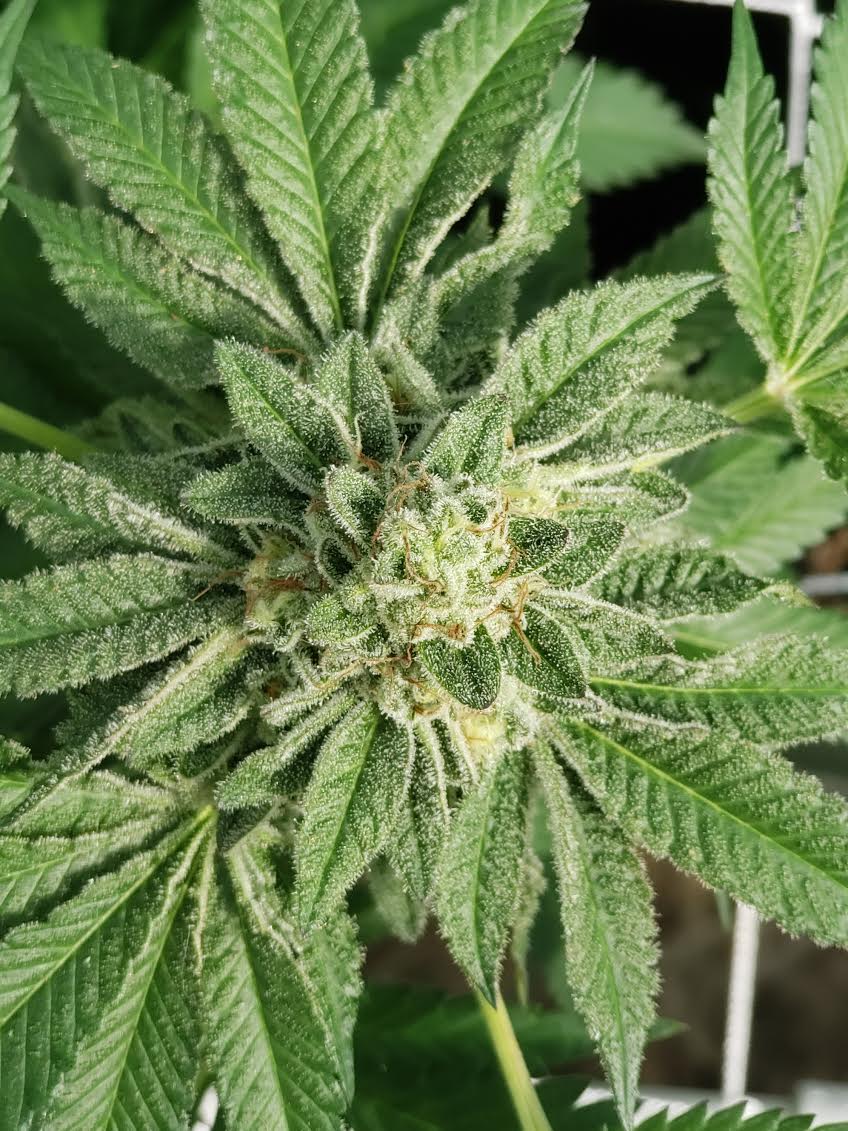 Take care of your plants and they will reward you nicely
Take care of your plants and they will reward you nicely
Cleaning
Take out the trash. Remember to always take your bucket and any cut foliage out of the garden when you’re done with your walk-through. Immediately discard cut leaves directly into a trash can, preferably located far away from your plants.
Clean with products that can handle stickiness. Clean sticky hands with coconut oil and a paper towel, then wash with dish soap. Soak sticky scissors in rubbing alcohol or freeze them first, then wipe clean. Repeat as needed.
Good cleaning products include:
- Coconut Oil
- Dr. Bronner’s Peppermint Soap
- Rubbing Alcohol
- Simple Green
Long-Term Storage
To properly store seeds:
- Store in a sealed glass jar or container at the back of your fridge at 36F, away from the fridge light and door.
- Avoid taking the jar in and out of the fridge to prevent condensation and moisture from forming inside.
- Try to use seeds within 10 years.
To properly store flowers:
- Use a vacuum seal-meal machine
- To avoid crushing flowers, make sure you don’t take out too much air
- Store in smaller amounts
- Store in a freezer to eliminate rapid trichome degradation
 Cannabis can help relieve medical conditions and provides therapeutic advantages
Some proven benefits of gardening include:
Cannabis can help relieve medical conditions and provides therapeutic advantages
Some proven benefits of gardening include:
 Organic cannabis with the proper cannabinoid content and terpene profile classifies it as medicinal
Organic cannabis with the proper cannabinoid content and terpene profile classifies it as medicinal
 Organic cannabis is grown in soil with beneficial microbes, under the sun, without synthetic nutrients
Another difference with organic cannabis is that it has a higher nutrient density, which produces higher brix levels. The brix level is the percentage of sugars present in a plant's sap. The higher the brix level, the higher the quality of the flower. As far as cannabis is concerned, higher brix means plants are healthier, have more aroma, flavor, and medicinal value, and also extends the shelf life of a flower. Non-organic cannabis may be able to achieve high THC and CBD content; however, it will have lower terpene profiles when compared to properly grown organic cannabis. While THC and CBD content are important in determining the effectiveness of a strain, without the terpene profile to back it up, it is not as medicinal and the effects are short-lived.
--
If a cannabis plant, which is especially sensitive and responsive to the environment it grows in, is allowed to develop as naturally as possible, it is given a chance to reach peak medicinal value. Certain factors, like light intensity and microbial activity, will help a plant produce the terpenes and characteristics that allow it to reach that status.
If the cannabis you are consuming is grown with synthetic fertilizers, it can actually be harmful for you, because what is used on the plant will be passed on to the patient seeking relief. If it’s grown organically, with infused probiotics, it can be healing.
Because it can be difficult to be certain how flowers in a jar were produced, it's wise to consider the source it came from; ultimately, the patient will decide if a particular strain provides acceptable relief for them.
Organic cannabis is grown in soil with beneficial microbes, under the sun, without synthetic nutrients
Another difference with organic cannabis is that it has a higher nutrient density, which produces higher brix levels. The brix level is the percentage of sugars present in a plant's sap. The higher the brix level, the higher the quality of the flower. As far as cannabis is concerned, higher brix means plants are healthier, have more aroma, flavor, and medicinal value, and also extends the shelf life of a flower. Non-organic cannabis may be able to achieve high THC and CBD content; however, it will have lower terpene profiles when compared to properly grown organic cannabis. While THC and CBD content are important in determining the effectiveness of a strain, without the terpene profile to back it up, it is not as medicinal and the effects are short-lived.
--
If a cannabis plant, which is especially sensitive and responsive to the environment it grows in, is allowed to develop as naturally as possible, it is given a chance to reach peak medicinal value. Certain factors, like light intensity and microbial activity, will help a plant produce the terpenes and characteristics that allow it to reach that status.
If the cannabis you are consuming is grown with synthetic fertilizers, it can actually be harmful for you, because what is used on the plant will be passed on to the patient seeking relief. If it’s grown organically, with infused probiotics, it can be healing.
Because it can be difficult to be certain how flowers in a jar were produced, it's wise to consider the source it came from; ultimately, the patient will decide if a particular strain provides acceptable relief for them.
 W.O.W. (Walking On Water) - A high THC strain
W.O.W. (Walking On Water) - A high THC strain
 Find a strain that’s right for you to experience the best of cannabis
With so many strains to choose from, where do you start?
When selecting a strain for treatment, keep the following questions in mind:
Find a strain that’s right for you to experience the best of cannabis
With so many strains to choose from, where do you start?
When selecting a strain for treatment, keep the following questions in mind:
 Animal Cookies - an Indica-dominant strain
For those unfamiliar with the plant, they all tend to seem pretty similar, but once you familiarize yourself with them, differences are easy to recognize:
Indica-dominant strains typically tend to be short and bushy, have less leaves than Sativa strains, and the leaves are a darker green and wider. Indica flowers produce more of a relaxing effect, and are generally preferred for nighttime use.
Sativa-dominant strains typically tend to be tall and thin, have more leaves than Indica strains, and the leaves are lighter green and smaller. Sativa flowers produce more of an uplifting and energizing effect, and are generally preferred for daytime use.
--
Ruderalis strains typically tend to be shorter and stalkier than either Indica or Sativa strains. Characteristics also include wide leaves with a light green color, and low THC content. Its flowering cycle is initiated by maturity instead of light exposure, making it auto-flowering.
Hybrid strains are a mix of two varieties; for example, a cross of an Indica and a Sativa. As the cannabis plant’s gene pool becomes more diverse in the modern era of breeding, there is an increasing variety of poly-hybrid strains; a cross between two (or more) hybrids. Most of today's popular strains are poly-hybrids.
Animal Cookies - an Indica-dominant strain
For those unfamiliar with the plant, they all tend to seem pretty similar, but once you familiarize yourself with them, differences are easy to recognize:
Indica-dominant strains typically tend to be short and bushy, have less leaves than Sativa strains, and the leaves are a darker green and wider. Indica flowers produce more of a relaxing effect, and are generally preferred for nighttime use.
Sativa-dominant strains typically tend to be tall and thin, have more leaves than Indica strains, and the leaves are lighter green and smaller. Sativa flowers produce more of an uplifting and energizing effect, and are generally preferred for daytime use.
--
Ruderalis strains typically tend to be shorter and stalkier than either Indica or Sativa strains. Characteristics also include wide leaves with a light green color, and low THC content. Its flowering cycle is initiated by maturity instead of light exposure, making it auto-flowering.
Hybrid strains are a mix of two varieties; for example, a cross of an Indica and a Sativa. As the cannabis plant’s gene pool becomes more diverse in the modern era of breeding, there is an increasing variety of poly-hybrid strains; a cross between two (or more) hybrids. Most of today's popular strains are poly-hybrids.
 Age, sensitivity, and therapeutic need will play a leading role in what the best dosage will be
--
In addition to determining the correct ratio of THC to CBD, finding the correct dosage is also important. For example, if you decide that a 100% THC strain is what helps, you will need to then find the right dose. It is usually wise to start off with a small, introductory amount, a loading dose if you will, and then gradually increase it. You'll want to allow your body to develop somewhat of a tolerance before you can begin taking a large enough dose for effective results. If you start with too big a dose, you may have a negative experience, like increased heart rate or anxiety, and it could discourage you from continuing treatment.
When you’re deciding which route to go, THC or CBD, remember, you may need a combination of both. It may take a little time before you can find the correct ratio and then begin treatment for a specific illness/issue, but the advantages it offers can be substantial. Do your research, seek advice from reputable sources, observe how each one works for you by finding the proper strain and dosage, and finally, commit to treatment sufficiently long enough to experience the full benefits.
Age, sensitivity, and therapeutic need will play a leading role in what the best dosage will be
--
In addition to determining the correct ratio of THC to CBD, finding the correct dosage is also important. For example, if you decide that a 100% THC strain is what helps, you will need to then find the right dose. It is usually wise to start off with a small, introductory amount, a loading dose if you will, and then gradually increase it. You'll want to allow your body to develop somewhat of a tolerance before you can begin taking a large enough dose for effective results. If you start with too big a dose, you may have a negative experience, like increased heart rate or anxiety, and it could discourage you from continuing treatment.
When you’re deciding which route to go, THC or CBD, remember, you may need a combination of both. It may take a little time before you can find the correct ratio and then begin treatment for a specific illness/issue, but the advantages it offers can be substantial. Do your research, seek advice from reputable sources, observe how each one works for you by finding the proper strain and dosage, and finally, commit to treatment sufficiently long enough to experience the full benefits.
 Good news: There are a few ways to shorten the time till harvest
3. Keep the Plant Size Small/Short Veg Time
If all things are healthy (and again, strain dependent), a smaller plant usually means it’s spent a shorter time in veg. Keeping a cutting under veg lights for 3-4 weeks will allow you to get the plant to a nice size, increasing your yield, while still facilitating a shorter time to harvest.
Bonus: a shorter veg time also decreases the chances of deficiencies - because you won’t need to look after it as long.
Decide how long you’re willing to let your plants veg.
--
4. Keep It Healthy
For fast, steady growth, a cannabis plant needs to be healthy. It’s essential. Healthy plants, not surprisingly, also produce higher quality flowers. Flourishing cannabis plants are green, with leaf stems growing upward, and with the fingers of the leaves maintaining proper structure and large size.
In order to reach that state, plants need to have good soil, vigorous roots, adequate light and airflow, be kept at the right temperature and humidity, and be well-fed, trained, and maintained. Remember, a shorter time to harvest doesn’t necessarily mean less work; it just means less wait time.
Although slightly demanding, it’s nothing you can’t handle.
--
Good news: There are a few ways to shorten the time till harvest
3. Keep the Plant Size Small/Short Veg Time
If all things are healthy (and again, strain dependent), a smaller plant usually means it’s spent a shorter time in veg. Keeping a cutting under veg lights for 3-4 weeks will allow you to get the plant to a nice size, increasing your yield, while still facilitating a shorter time to harvest.
Bonus: a shorter veg time also decreases the chances of deficiencies - because you won’t need to look after it as long.
Decide how long you’re willing to let your plants veg.
--
4. Keep It Healthy
For fast, steady growth, a cannabis plant needs to be healthy. It’s essential. Healthy plants, not surprisingly, also produce higher quality flowers. Flourishing cannabis plants are green, with leaf stems growing upward, and with the fingers of the leaves maintaining proper structure and large size.
In order to reach that state, plants need to have good soil, vigorous roots, adequate light and airflow, be kept at the right temperature and humidity, and be well-fed, trained, and maintained. Remember, a shorter time to harvest doesn’t necessarily mean less work; it just means less wait time.
Although slightly demanding, it’s nothing you can’t handle.
--
 Certain varieties of cannabis show colors like purple, red, blue, and black depending on certain factors
Certain varieties of cannabis show colors like purple, red, blue, and black depending on certain factors
 Environmental factors greatly affect the look of a cannabis plant
In addition, anthocyanins do not always appear purple, and depending on the environment, can appear as pinks, reds, blues, and black. Pinks and reds appear in acidic mediums, purples appear in neutral mediums, and blues are present in more alkaline environments. While pH and nutrient imbalances can influence plant color, healthy cannabis plants change color for other reasons as well.
Another environmental factor that influences color in certain cannabis varieties is temperature. Similar to the color-changing leaves in Fall, cooler temperatures (60+/- degrees F) cause a cannabis plant’s chlorophyll to break down into sugars that are used by the plant. With the dominating chlorophyll pigments broken down, anthocyanins become visible.
Environmental factors greatly affect the look of a cannabis plant
In addition, anthocyanins do not always appear purple, and depending on the environment, can appear as pinks, reds, blues, and black. Pinks and reds appear in acidic mediums, purples appear in neutral mediums, and blues are present in more alkaline environments. While pH and nutrient imbalances can influence plant color, healthy cannabis plants change color for other reasons as well.
Another environmental factor that influences color in certain cannabis varieties is temperature. Similar to the color-changing leaves in Fall, cooler temperatures (60+/- degrees F) cause a cannabis plant’s chlorophyll to break down into sugars that are used by the plant. With the dominating chlorophyll pigments broken down, anthocyanins become visible.
 Colored cannabis is usually due to genetic traits, but temperature can also play a role
Colored cannabis is usually due to genetic traits, but temperature can also play a role
 Blue Sapphire was found from seed and tests at 32.5% THC
Blue Sapphire was found from seed and tests at 32.5% THC
 Photographing cannabis takes practice, but shows just how beautiful the plant is!
2. Consider how far into flower the plant is. The most remarkable cannabis photos are of healthy plants that are several weeks into flower. Make sure you inspect your garden daily and prepare your plants for a photoshoot by keeping them pest and disease-free for the entirety of their lives. A happy plant is a well-cared for plant.
3. You need good lighting. Take photos at different times of the day. Morning and early evening provide optimum natural lighting, ensuring the light isn't too harsh. Overcast days can also add to the look of a photo, so experiment; photograph in different weather conditions as well.
4. Try different angles. Each plant is different, so take photos of its unique beauty by varying your photographic perspectives. Be aware of what's in the background, and try to capture the flower with nothing man-made in the frame.
--
5. Stand still. Blurry pictures won't do! Consider using a tripod. Wind can cause movement with the plants and can blur photos as well, so be conscious of the weather and try to avoid photographing on windy days; consider turning fans off too. Zooming in can help you dramatically determine if the resin glands and hairs are in focus. If you do take a blurry photo, it's best to delete it immediately to avoid having too many images to look through, or running out of memory.
6. Edit. It's important not to overdo the editing, but touching up a photo can be helpful. The best thing you can do is crop a photo. Zoom in and find the best look. Sometimes placing the flower off center achieves the best, most impacting results.
Photographing cannabis takes practice, but shows just how beautiful the plant is!
2. Consider how far into flower the plant is. The most remarkable cannabis photos are of healthy plants that are several weeks into flower. Make sure you inspect your garden daily and prepare your plants for a photoshoot by keeping them pest and disease-free for the entirety of their lives. A happy plant is a well-cared for plant.
3. You need good lighting. Take photos at different times of the day. Morning and early evening provide optimum natural lighting, ensuring the light isn't too harsh. Overcast days can also add to the look of a photo, so experiment; photograph in different weather conditions as well.
4. Try different angles. Each plant is different, so take photos of its unique beauty by varying your photographic perspectives. Be aware of what's in the background, and try to capture the flower with nothing man-made in the frame.
--
5. Stand still. Blurry pictures won't do! Consider using a tripod. Wind can cause movement with the plants and can blur photos as well, so be conscious of the weather and try to avoid photographing on windy days; consider turning fans off too. Zooming in can help you dramatically determine if the resin glands and hairs are in focus. If you do take a blurry photo, it's best to delete it immediately to avoid having too many images to look through, or running out of memory.
6. Edit. It's important not to overdo the editing, but touching up a photo can be helpful. The best thing you can do is crop a photo. Zoom in and find the best look. Sometimes placing the flower off center achieves the best, most impacting results.
 Tip: Zoom in and crop an image to capture some great shots
Tip: Zoom in and crop an image to capture some great shots
 Guard dog on duty - he does his job well
Guard dog on duty - he does his job well
 The photoperiod a plant is exposed to heavily determines quality achieved
Make sure plants get enough light. The correct distance a light should be above a plant is largely dependent on the fixture and the settings of the light in addition to the strain.
Wear protective glasses when tending to indoor plants. For most lights, gardeners and pets should not have lengthy exposure, or problems with eyesight may develop. If you need to work in the light, wearing special glasses is recommended.
The photoperiod a plant is exposed to heavily determines quality achieved
Make sure plants get enough light. The correct distance a light should be above a plant is largely dependent on the fixture and the settings of the light in addition to the strain.
Wear protective glasses when tending to indoor plants. For most lights, gardeners and pets should not have lengthy exposure, or problems with eyesight may develop. If you need to work in the light, wearing special glasses is recommended.
 Cloning allows you to grow the same pheno over and over
Cloning allows you to grow the same pheno over and over
 Certain varieties perform better in different conditions
Certain varieties perform better in different conditions
 Take care of your plants and they will reward you nicely
Take care of your plants and they will reward you nicely